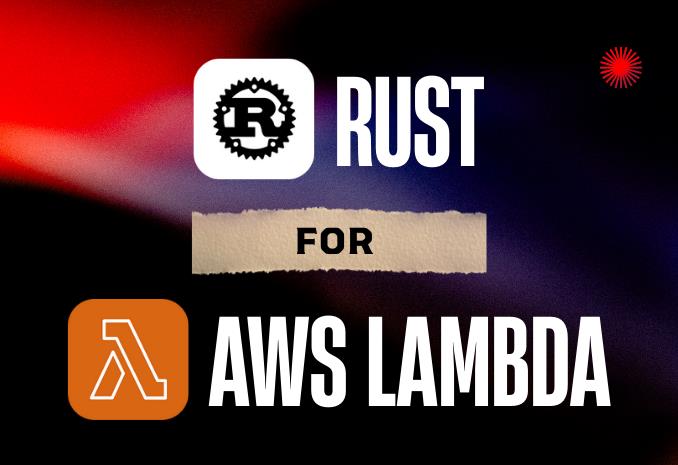How to Estimate Software Project Resources & Time in 2025: Real-Life IT Project Insights

Introduction
Software Project Estimation 2025 is essential for businesses, governments, and startups to plan resources, timelines, and costs accurately. Effective project estimation ensures the right team allocation, realistic development hours, and optimized technology stack usage. By mastering software development costs, organizations can avoid budget overruns, meet deadlines, and deliver high-quality projects, whether for fintech, AI healthcare, Android apps, or Game & XR experiences.
This blog shares practical methods and real-life examples from:
- Fintech wallets
- AI healthcare platforms
- Game & XR (Extended Reality) with VFX & Motion Graphics for private & public projects
By reading this, you’ll understand how to:
- Plan project durations
- Allocate the right teams
- Account for costs across regions like India, Southeast Asia, Papua New Guinea (PNG), and the US
Ensuring accurate and realistic software project estimates is now easier with structured insights.
Why Resource & Time Breakdown Matters
Quick Answer: A detailed resource and time breakdown ensures accurate cost estimates, realistic timelines, and transparent planning. It helps identify the right team and prevents scope creep, saving time and budget.
A detailed breakdown is essential because it:
- Estimates project costs accurately
- Identifies required skill sets and team composition
- Plans realistic delivery timelines
- Prevents scope creep and budget overruns
- Provides transparency to clients and stakeholders
- Supports retainer projects for ongoing development needs
Example:
- Blockchain fintech platform: 6,000+ development hours across 40 weeks
- Healthcare AI app: 5,000+ hours across 30 weeks
- Blockchain proof-of-concept (POC): 160 hours over 4 weeks
Key Factors Affecting Estimates
Project Scope & Complexity
- Simple apps (POC, internal tools): 100–500 hours
- Medium apps (e-commerce, fintech wallets): 1,000–3,000 hours
- Large apps (AI healthcare, AR/VR, government systems): 3,000–6,000+ hours
- Game & XR (Extended Reality) with VFX & Motion Graphics:
- Example: VR training simulation, AR-based retail experience, or immersive game with cinematic VFX and real-time 3D animation
- Effort: ~3,500–6,500+ hours depending on content complexity and level of interactivity
- Example: VR training simulation, AR-based retail experience, or immersive game with cinematic VFX and real-time 3D animation
Team Composition
- Core developers (frontend, backend, mobile)
- AI/ML specialists (for AI apps)
- Blockchain engineers (for fintech, escrow systems)
- Game developers (Unity/Unreal)
- 3D modelers & animators
- VFX artists & motion graphics specialists
- XR interaction designers
- Project Manager, QA, DevOps, UI/UX
- QA testers & project manager
Technology Stack
Backend:
- Node.js: Ideal for real-time apps like chat platforms or live data dashboards
- .NET: Preferred for enterprise-level applications with robust scalability
- Java: Suited for secure banking and financial systems
- Python: Versatile for AI/ML, web apps, and rapid prototyping
Frontend:
- React.js: Fast and efficient for dynamic, single-page applications
- React Native: Time-saving (up to 50% faster) for cross-platform mobile apps
- Angular: Optimal for enterprise applications with complex UI needs
AI/ML:
- TensorFlow: Powerful for deep learning and neural networks
- PyTorch: Flexible for research-driven AI models
- spaCy: Efficient for natural language processing (NLP) tasks
Blockchain:
- Solidity: Core for Ethereum-based smart contracts
- Polygon: Scalable for cost-efficient blockchain solutions
- BSC: Fast and low-cost for DeFi applications
AR/VR, Game & XR (Extended Reality):
- Unity: Versatile for immersive gaming, AR/VR experiences, and XR applications
- Unreal Engine: High-fidelity graphics for premium AR/VR apps, games, and cinematic XR
VFX, Motion Graphics & 3D:
- Compositing & Motion Graphics: Nuke, After Effects, Houdini, Silhouette, Mocha, Boujou, Cinema 4D
- 3D Modeling & Animation: Autodesk Maya, Blender, ZBrush, Marvelous Designer
- Texturing & Design: Adobe Substance Painter, Adobe Illustrator, Adobe Photoshop
Regulatory & Compliance Requirements
- Healthcare: HIPAA, GDPR
- Fintech: Financial regulations, central bank approvals
- Government IT: Local compliance & digital security frameworks
Hardware & Integrations
- NFC card systems, POS terminals
- Blockchain network nodes
- Cloud infrastructure & hosting
Game & XR (Extended Reality):
- VR headsets: Oculus, HTC Vive, PS VR
- AR devices: HoloLens, Magic Leap
- Motion tracking systems
- Haptic feedback devices
VFX, Motion Graphics & 3D:
- High-performance GPUs
- Motion capture (MoCap) suits & cameras
- Green screen / chroma key setups
- 3D scanning devices
Sample Breakdown Table
- Costs vary by hourly rates:
- India: $15–$70
- Southeast Asia: $20–$75
- United States: $60–$240
- Europe: $32–$130
- Australia: $30–$130
- UAE: $40–$200
- India: $15–$70
Step-by-Step Approach to Software Project Estimation 2025
1. Gather Requirements
- Define goals, target platforms, hardware, and compliance
- Software Example: PNG government visitor system integrating X-Telcom hardware and BPNG regulations
- Game/XR Example: VR training app for PNG mining with motion tracking & local language support
2. Define Scope Clearly
- Separate core features/mechanics from optional/extras
- Software/Android: Core features (payment, login, notifications), extras (analytics dashboards, offline mode)
- Game/XR: Core mechanics (player movement, physics, training modules), extras (cinematics, shaders, multiplayer, realistic animations)
- Software/Android: Core features (payment, login, notifications), extras (analytics dashboards, offline mode)
- Avoid vague requirements to prevent overruns
3. Estimate Development Hours
- Use historical benchmarks and past project data
- Factor in AI cycles, blockchain testing, AR/VR rendering, mocap cleanup, animation, VFX, and mobile optimization
Example ranges:
- Android/Software apps:
- Small POC/internal tool: 100–500 hrs
- Medium app: 1,000–3,000 hrs
- Large app: 3,000–6,000+ hrs
- Small POC/internal tool: 100–500 hrs
- Game/XR projects:
- Small demo: 200–500 hrs
- Mid-scale XR/game: 2,500–4,000 hrs
- Large immersive project with VFX & Motion Graphics: 5,000–6,500+ hrs
- Small demo: 200–500 hrs
4. Plan Team Allocation
- Assign developers by specialization
- Add supporting roles for compliance-heavy or immersive projects
Example teams:
- Android/Software: Android developers, backend engineers, QA testers, UI/UX designers, Project Manager
- Game/XR: Unity/Unreal developers, 3D artists, animators, VFX & motion designers, sound designers, QA, project manager
5. Account for Technology & Tools
- Android/Software: Java/Kotlin, Android SDK, Firebase, REST APIs, React Native
- Game/XR: Unity, Unreal Engine, XR SDKs (Oculus, ARKit/ARCore), VFX/3D tools (Maya, Blender, Houdini)
6. Define Timeline & Milestones
- Split into Prototype → Alpha → Beta → Deployment/Release
- Include feedback/playtesting loops
Milestones:
- Android/Software: Alpha (core functionality) → Beta (user testing) → Release candidate
- Game/XR: Prototype → Alpha (core mechanics) → Beta (playtesting & VFX) → Release (final cinematic & polished interactions)
7. Account for Retainer Projects
- Estimate ongoing support hours (10–20 hours/month) for updates, bug fixes, feature enhancements
- Calculate costs with regional rates and 10–15% buffer
- Define retainer scope upfront
8. Document Assumptions & Exclusions
- Exclude third-party APIs, specialized hardware, licensing fees, external assets
Tips for Accurate & Transparent Estimates
- Include team size, skill set, technology stack
- Call out dependencies (client feedback, regulatory approvals)
- Show parallel development possibilities
- Compare regional differences (e.g., fintech wallet: $80k in India vs $400k+ in US)
- Consider retainer projects for long-term collaboration
Common Mistakes to Avoid: Q&A
Here are answers to common questions and pitfalls to avoid when estimating software projects:
- Q: How much of the total project budget should be allocated to QA and testing?
- A: Typically, 20–30% of the project budget should be allocated to QA and testing. This ensures thorough validation of functionality, security, and performance, reducing post-launch issues. For complex projects like AI or blockchain, consider allocating closer to 30% due to extensive testing needs.
- Q: How to account for responsive design when initiating a project estimate for a project requirement?
- A: During discovery calls, define the range of UI responsiveness needed (e.g., mobile, tablet, desktop). Estimate additional hours (10–20% of frontend development) for responsive design and cross-device testing to ensure a seamless user experience across platforms.
- Q: How to account for third-party integrations while building a proposal?
- A: While building a proposal, estimate the time and resources needed for third-party integrations, then add a buffer of 10–20% of the hours to account for potential delays or compatibility issues. Include subscription costs for APIs or services in the budget to avoid surprises.
- Q: What’s a common mistake when estimating project timelines?
- A: Underestimating feedback loops and client approvals can derail timelines. Always include buffer time (e.g., 1–2 weeks per milestone) for client reviews and revisions to maintain realistic schedules, including post-launch support phases.
- Q: How can scope creep be avoided during estimation?
- A: Clearly define core and optional features during the scoping phase. Use a detailed requirements document and get client sign-off to prevent mid-project additions that inflate costs and timelines.
Account for Post-Launch Support
- Estimate ongoing maintenance hours (e.g., 20–50 hours/month) for bug fixes, updates, and user support post-launch, based on project complexity.
- Calculate costs using regional rates (e.g., $400–$2,500/month in India vs. $1,600–$7,500/month in the US) and include a 15–20% buffer for unforeseen issues.
- Define support scope (e.g., emergency fixes vs. feature enhancements) and set clear SLAs to manage expectations and costs effectively.
- Account for revisions in post-launch support by including provisions for periodic reviews (e.g., every 6 months). During these reviews, the client and service provider analyze actual work performed, track usage metrics (e.g., ticket volume, update frequency), gather feedback, and estimate future needs to revise monthly retainer rates. This ensures fair pricing—rates may increase for added complexity or decrease if support demands are lower than anticipated—typically through mutual negotiation and updated agreements to reflect real-world usage.
Conclusion
A detailed resource and time breakdown is the cornerstone of successful project planning in 2025. Whether building fintech apps, AI healthcare solutions, immersive AR/VR experiences, or government IT systems, estimating development hours, team composition, technology choices, and regional costs ensures transparency, prevents scope creep, and enables better decision-making. Incorporating retainer and post-launch support considerations further strengthens long-term partnerships, allowing businesses to plan budgets confidently and achieve predictable project outcomes.
Related articles



